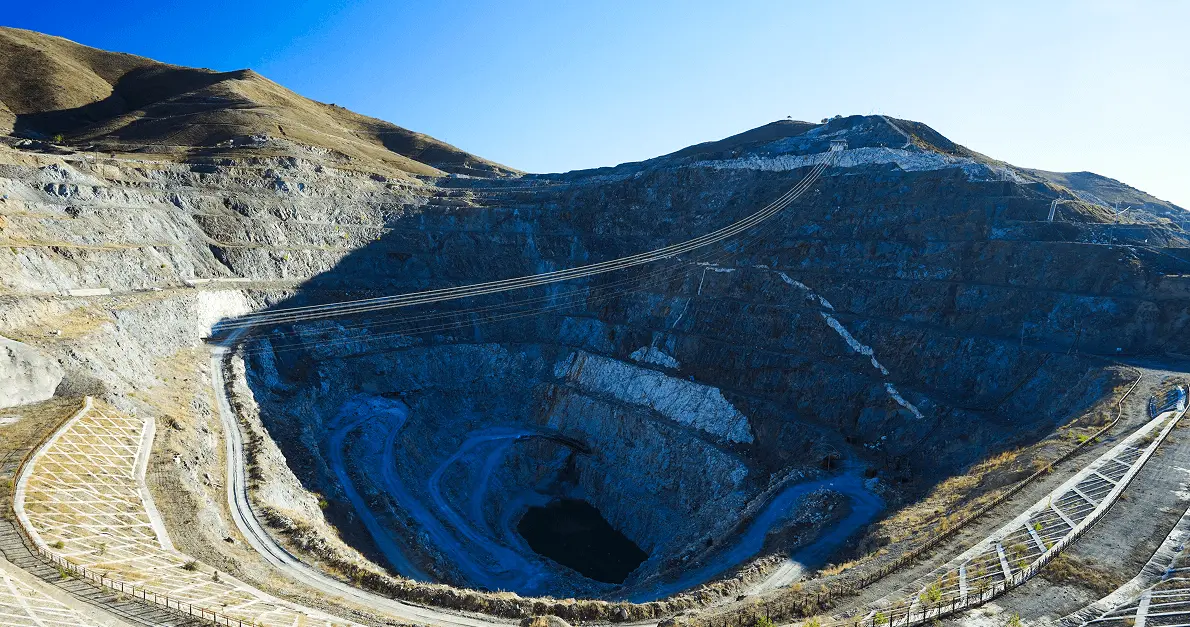The Critical-Minerals Shock Few Companies Are Ready For
The past two years have shown just how much the world relies on China’s critical minerals—and the nation’s willingness to exploit its supply chain dominance for geopolitical leverage.

The Critical Minerals Shock Few Companies Are Ready For
Article Highlights:
- China already dominates the processing and refining of several chokepoint materials (rare earths, graphite, cobalt), and that dominance has only increased in recent years.
- While the U.S. and their allies are ramping up their investments in domestic mineral production, even optimistic outlooks put significant production capacity for these supply chains years away. Meanwhile, China set a record for rare-earth magnet exports in 2024, underscoring global dependence on Chinese output and licensing.
- There’s a spectrum of responses companies can implement to reduce their critical mineral risk. These include obtaining full material declarations (FMDs) to better understand critical mineral dependencies; mapping supply chains to the material level to identify geographical dependencies; and exploring alternative formulations that remove high-risk minerals from products.
Many companies are working to reduce their dependence on China by sourcing components from alternative markets, including Brazil, Malaysia, and Turkey. However, few are addressing another, more critical, form of dependency: critical minerals.
Unlike component manufacturing, breaking reliance on critical mineral sources is far more complex and difficult to achieve. But independence for Western manufacturers is quickly becoming more imperative as critical minerals remain a point of leverage for China in its trade wars with the U.S.
Overview of China’s Dominance of Critical Minerals
China already dominates the processing and refining of several choke-point materials (rare earths, graphite, cobalt), and that dominance has only increased in recent years. According to the International Energy Agency, the top three refining nations’ average market share rose from ~82% (2020) to 86% (2024) over the past four years, with China the leading refiner for rare earths, graphite and cobalt.

On rare earths specifically, the U.S. Geological Survey reported that the United States imported ~70% of its rare-earth compounds and related metals from China from 2020 to 2023. And the U.S. Government Accountability Office has pointed out that China is the only country with processing capability at every stage of the neodymium-iron-boron (NdFeB) magnet supply chain. These magnets power EV drive motors, wind turbines, industrial robots, and other advanced, in-demand technologies.
China hasn’t been shy about using its dominance in critical minerals as a weapon on the global geopolitical stage. In July of 2023, China placed licensing requirements on gallium and germanium. Then, in December of 2024, it banned export of so-called “dual-use” items to the United States, a list that included gallium, germanium, antimony and other “superhard” materials. Just two months after that, in February 2025, China quietly announced that it would be requiring export licenses for additional minerals and all their derivative products: tungsten, tellurium, bismuth, indium, and molybdenum. Though this latest export restriction did not exclusively target the U.S., it serves as another retaliatory strike against what China perceives to be America’s own draconian export controls on semiconductors and AI technology.
Ford Shuts Down a Plant Due to Lack of Minerals
In May 2025, Ford confirmed it temporarily shut a plant due to a shortage of rare-earth magnets amid tightening Chinese export controls. This development illustrated how a single key supply chain bottleneck can stall operations at a multibillion-dollar manufacturer.
The shutdown at Ford underscored just how vulnerable U.S. manufacturers remain to disruptions in the critical minerals supply chain. The affected plant, which produced components for electric vehicles, relied heavily on rare-earth magnets sourced from China, materials essential for EV motors, wind turbines, and defense technologies. When export licenses slowed and prices spiked, Ford was forced to halt production for weeks, idling workers and delaying deliveries across its EV lineup. The ripple effects extended through the entire automotive sector, with suppliers scrambling to find alternative sources and analysts warning that a prolonged shortage could push up costs for consumers.
The shutdown at Ford underscored just how vulnerable U.S. manufacturers remain to disruptions in the critical minerals supply chain.
The crisis drew swift attention from Washington. The Trump administration quickly intervened with emergency measures, including tapping into the Defense Production Act and fast-tracking domestic rare-earth initiatives to reduce dependence on Chinese supply chains.
A Picture of Dependency
While the U.S. and their allies are ramping up their investments in domestic mineral production, even optimistic outlooks put significant production capacity for these supply chains years away. Meanwhile, China set a record for rare-earth magnet exports in 2024 (58,152 tonnes), underscoring global dependence on Chinese output and licensing.
If China limits access further—or simply slows its license approvals—the hit to Western manufacturing would be immediate. Downstream consequences could include price spikes, missed builds, customer escalations, and line stoppages.
What Can Companies Do to Reduce Their Risk?
There’s a sliding scale of responses companies can implement to reduce their critical mineral risk. Here are three key ways companies can effectively mitigate their critical mineral risk:
- Map your critical minerals usage with full material declarations (FMDs)
- Collect Full Material Declarations (FMDs): This can appear overwhelming if you have multiple products and thousands of components. Because of this, we recommend focusing on the most critical components first.
- Develop a Standardized Request Process: Create templates and standardized outreach methods to suppliers requesting FMDs on a regular basis. These resources will help firms understand the full scope of their mineral and chemical dependencies.
- Audit Your Data for Gaps: While you may already have some FMD information, it could be out of date, incomplete, or otherwise compromised. Organizations should identify these gaps so they can focus on filling out the bigger picture of supply chain risk.
- Map your components against restricted materials to see your full risk
- Map Restricted Materials: Collect and analyze material data to identify which parts or assemblies contain gallium, germanium, rare earths, or other controlled elements. Focus on the most critical components first in order to build a clear picture of your material dependencies.
- Assess Impact by Component: Determine which restricted materials pose the greatest risk to production or customer commitments by evaluating their role in key assemblies and potential exposure to supply or regulatory disruptions.
- Model Regulatory Scenarios: Run “what-if” analyses to understand how mineral restrictions or other regulatory risks could affect your supply chain. The outcomes of this scenario planning can help inform proactive risk management measures, including alternative sourcing, stockpiling, or even potential product refreshes.
- Identify where you can choose alternatives for your designs
- Shift to Unrestricted Regions: Identify and prioritize suppliers sourcing critical minerals from regions not subject to export restrictions in order to maintain supply continuity. But while this sort of supply chain measure may appear straightforward—look for suppliers sourcing critical minerals and REEs outside of China—it’s not always that simple. Chinese companies have ownership stakes in mines all over the world, including Africa and South America, and those sources may not be as stable as they appear. If and when possible, securing sourcing from suppliers without any ties to Chinese companies is the safest path to supply chain continuity.
- Source Components Without Restricted Materials: Work with engineering and procurement teams to qualify parts that eliminate gallium, germanium, rare earths, or other restricted elements from your designs.
- Pre-Qualify and Test Alternates: Vet, test, and certify replacement components early in the design process to verify that they meet performance, reliability, and compliance requirements.
Critical Minerals Are Now Risk Management Priorities
Tracking critical minerals is essential for effective risk management across today’s complex supply chains. Without clear visibility into where restricted or high-risk materials exist within your products, it becomes nearly impossible to anticipate disruptions, comply with evolving regulations, or plan for substitution strategies. By proactively mapping materials, assessing their impact, and modeling regulatory scenarios, companies can make more informed sourcing decisions. In turn, these decisions will reduce disruptions, strengthen regulatory compliance, and build a more resilient supply chain in the face of geopolitical and market uncertainty.
Supply chain risk management (SCRM) platform Z2Data has the capabilities to help organizations understand their critical mineral and REE vulnerabilities. The tool’s comprehensive supply chain mapping can go multiple tiers down, showing users who their direct suppliers source from and the geographical dependencies for key materials. Plus, with the expertise of Z2Data’s support teams, businesses can gain a better understanding of the role China plays in their mineral supply chains, as well as the most viable alternatives available to them.
To learn more about Z2Data and how its critical mineral insights can help your organization understand its potential risk exposures and lurking bottlenecks, schedule a free trial with one of our product experts.
The Z2Data Solution
Z2Data’s integrated platform is a holistic data-driven supply chain risk management solution, bringing data intelligence for your engineering, sourcing, supply chain and compliance management, ESG strategist, and business leadership. Enabling intelligent business decisions so you can make rapid strategic decisions to manage and mitigate supply chain risk in a volatile global marketplace and build resiliency and sustainability into your operational DNA.
Our proprietary technology augmented with human and artificial Intelligence (Ai) fuels essential data, impactful analytics, and market insight in a flexible platform with built-in collaboration tools that integrates into your workflow.


.svg)






